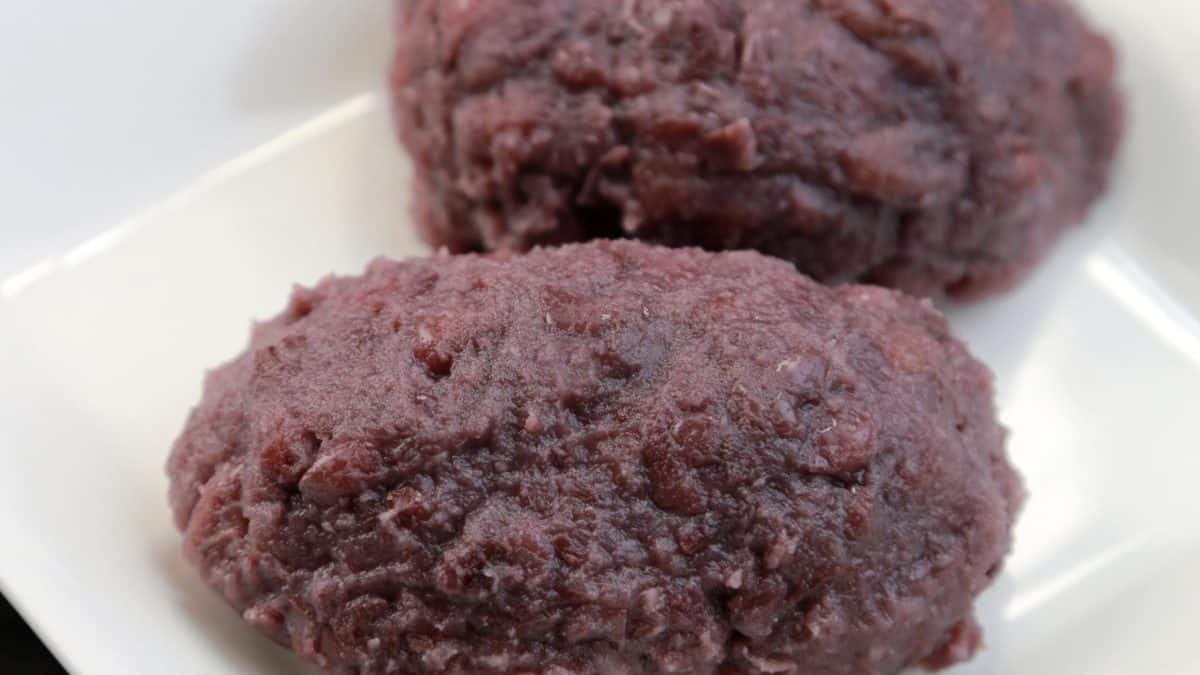Ohagi: Japonè dous Onigiri boul diri yo
Also known as botamochi, ohagi are sweet rice balls made with glutinous rice.
Mostly, they’re eaten during the higan period of spring and autumn, a Buddhist holiday celebrated by the Japanese during the 2 equinoxes.
Ohagi is a Japanese sweet made from mochi (rice cake) and often Anko (red bean paste). It is often eaten in autumn, when the leaves start to change color.

Ohagi can be made with mochigome, such as white or brown rice. Ohagi is usually round or oval in shape, and is often decorated with sesame seeds or kinako (soybean powder).

Tcheke nouvo liv kwit manje nou an
Resèt fanmi Bitemybun a ak planifikatè repa konplè ak gid resèt.
Eseye li gratis ak Kindle Unlimited:
Li gratisNan pòs sa a nou pral kouvri:
What does ohagi mean?
The name “ohagi” comes the autumn flower hagi (bush clover). Traditionally, the sweet rice balls made in the spring period are known as botamochi, and they’re named after the spring flower botan.
So they are two separate dishes made with different toppings. Ohagi is supposed to be made with red azuki beans to resemble the red-purple hagi flower.
In the ohagi recipe, there are 2 types of rice: Japanese and glutinous. Glutinous rice is a sticky and sweet rice strain grown in the southern Asian region.
The name “glutinous” doesn’t mean that the rice contains gluten, but rather, that it’s sticky. It’s not always easy to cook glutinus rice, so look out for rice cookers with a special “sticky rice” setting.
There’s a Japanese cake made from glutinous rice: mochi. Japanese rice, on the other hand, is short-grain-polished white rice.
What does ohagi taste like?
Ohagi has a chewy texture and the mochi can be either sweet or savory. The anko topping is kind of sweet.
Tou li: these are delicious sweet onigiri ohagi recipes to try for yourself
How to eat ohagi
Ohagi is often served with tea, and makes a great snack or dessert.
Pou manje ohagi, tou senpleman itilize bagèt oswa dwèt ou pou ranmase yon boul nan yon moman. Si w ap itilize bagèt, ou ka kenbe ohagi a nan pla men w, epi apresa manje l an ti mòde. Altènativman, ou ka mete ohagi a dirèkteman nan bouch ou.
Si w ap sèvi ohagi pou envite, ou ka vle mete yo sou ti plak oswa nan bòl. Lè sa a, chak moun ka pran youn oubyen de ohagi nan yon moman.
What’s the difference between ohagi and botamochi?
The main difference between ohagi and botamochi is the shape. Ohagi are typically round or oval, while botamochi are balls. Botamochi also tend to have a sweeter topping. Both are mochigashi though, a type of sweet made from mochigome.
What’s the difference between ohagi and daifuku?
The main difference between ohagi and daifuku is the filling. Daifuku typically has a sweet red bean paste filling, while ohagi is covered in red bean paste. Daifuku really is filled mochi whereas ohagi is decorated mochi.
Is ohagi healthy?
Ohagi is made from mochi, which is a rice cake. Rice cakes are generally considered to be healthy, as they are low in fat and calories. However, ohagi is also covered in sweet red bean paste, which adds sugar and calories. So while ohagi may not be the healthiest snack out there, it is still a reasonably healthy option.
konklizyon
Ohagi really is just a mogashi made for a special occasion, that’s why it has its unique color and taste.
Tcheke nouvo liv kwit manje nou an
Resèt fanmi Bitemybun a ak planifikatè repa konplè ak gid resèt.
Eseye li gratis ak Kindle Unlimited:
Li gratisJoost Nusselder, fondatè a nan mòde pen mwen an se yon komèrsyaliz kontni, papa ak renmen ap eseye soti nouvo manje ak manje Japonè nan kè a nan pasyon l 'yo, epi ansanm ak ekip li a li te kreye an pwofondè atik blog depi 2016 ede lektè rete fidèl ak resèt ak konsèy pou kwit manje.

